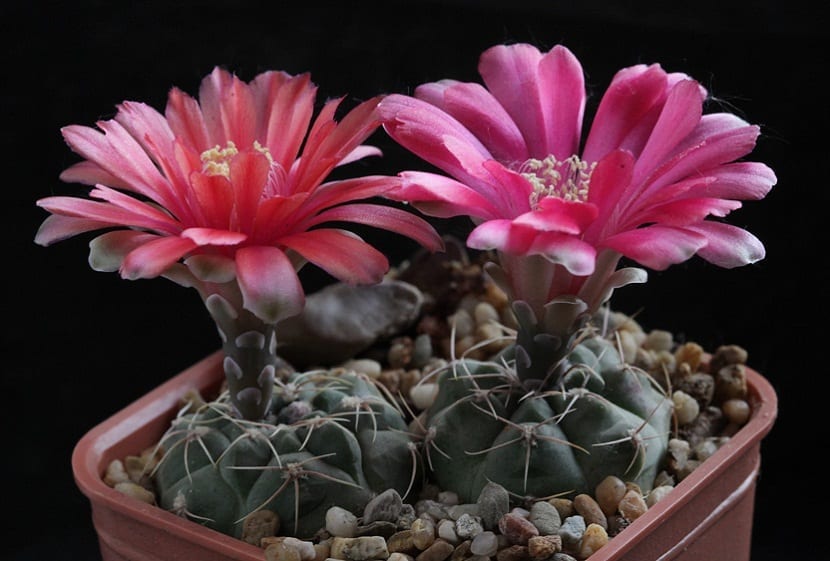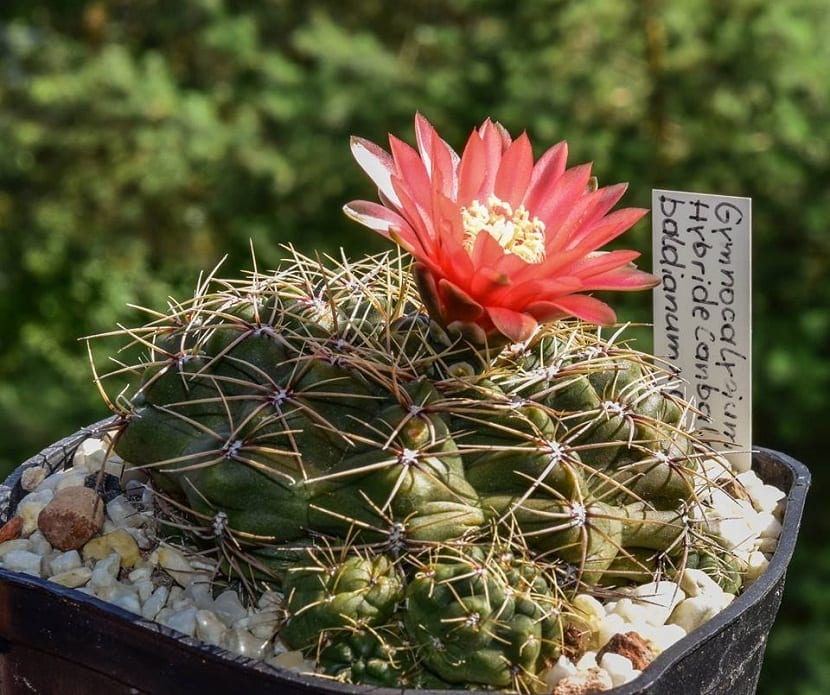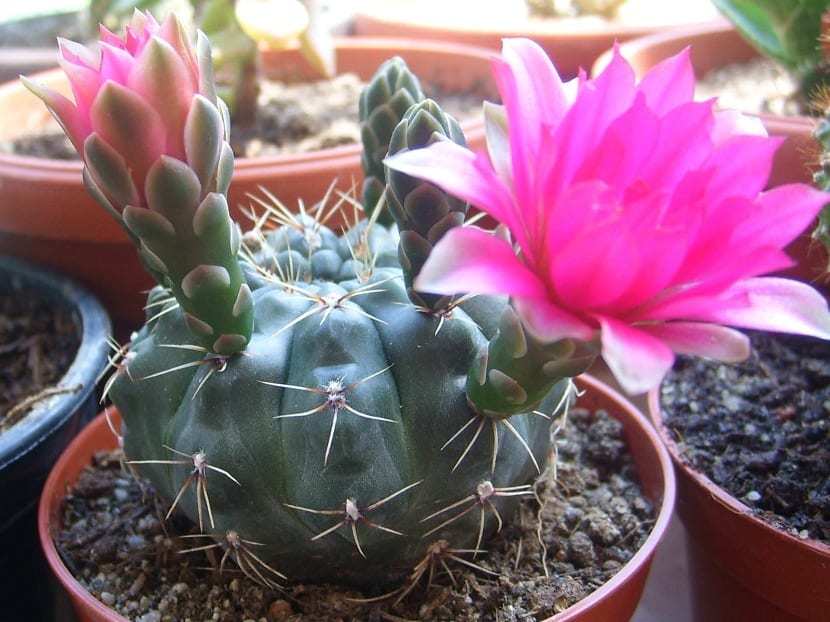
The Gymnocalycium baldianum seek shade in nature, among bushes or grasses, while others grow fully exposed. Therefore, some will need shelter from the sun in the hotter months, but doing so will result in flower loss.
Features

El Gymnocalycium baldianum commonly called Chin Cactus, it is a genus that has about 70 species of cacti in South America. The genus name Gymnocalycium (from the Greek, "naked chalice") refers to flower buds that do not have hair or thorns.
Its main area of distribution is Argentina, part of Uruguay, Paraguay, southern Bolivia and part of Brazil.
Most species are quite small and vary from 5 to 15 cm in size. When it comes to cultivation they are popular for their easy flowering habits and the flowers are generally brightly colored. When temperatures drop below 10 ° C, they should be grown under glass and with heat.
As we mentioned above some dwarf chin cacti seek shade in nature, so they don't like direct light.
It is best to grow them in pots and in well-drained soil, with a mixture of topsoil, peat and if possible sand and you always have to water moderately, letting the soil dry out before watering it again.
They can be easily propagated by cuttings, since the seed of this plant germinates well when fresh and It will keep for a few years if stored in cold conditions.
Farming
The water needed for its cultivation should be sufficient to allow good drainage, so that the plants do not sit in soggy soil for more than a day or two, after watering.
Watering in the summer months and while the plants are growing well, can be frequent (weekly for small plants in small pots), but always allowing the compost to almost dry out before watering again.
Instead, watering in the winter months is unwise and certainly not necessary. The most difficult and complicated periods are spring and autumn.
When grafting, it is generally not necessary to graft except plants without chlorophyll or very varied, but this can be used to make plants of slow-growing species grow or to spread more easily to solitary plants.
The flat graft seems to be the most used these days and it really is the easiest to do. The best time for grafting is when both the stock (the lower part, usually a cereoid cactus,) and the stem (the upper part, that is, the Gymnocalycium that you are grafting), it is actively growing and usually this occurs from April to August.
It should be fertilized with a specific product for cacti and that you do it mainly at the beginning of spring and summer.
Plagues and diseases

Much like any other cactus, dwarf chin cacti suffer from the persistent plague of the mealybug in both forms.
The dwarf chin cacti and like other cacti, they will suffer from fungal disorders if they are watered too muchBut often only the root system will collapse, leaving the task of removing any rot at the base of the plant and you will need to sprinkle with a fungicidal powder before restarting.
Plastic pots are lighter and generally cheaper to plant, they take up less space compared to clay or ceramic pots, with the same internal dimensions and they are easy to clean.
Plants that are kept in plastic pots also tend to require less watering compared to unglazed clay pots.
Regardless of the material the pot is made of, this should allow good drainage. It is very difficult, if not impossible, to successfully grow a cactus or succulent in a pot that lacks drainage holes.